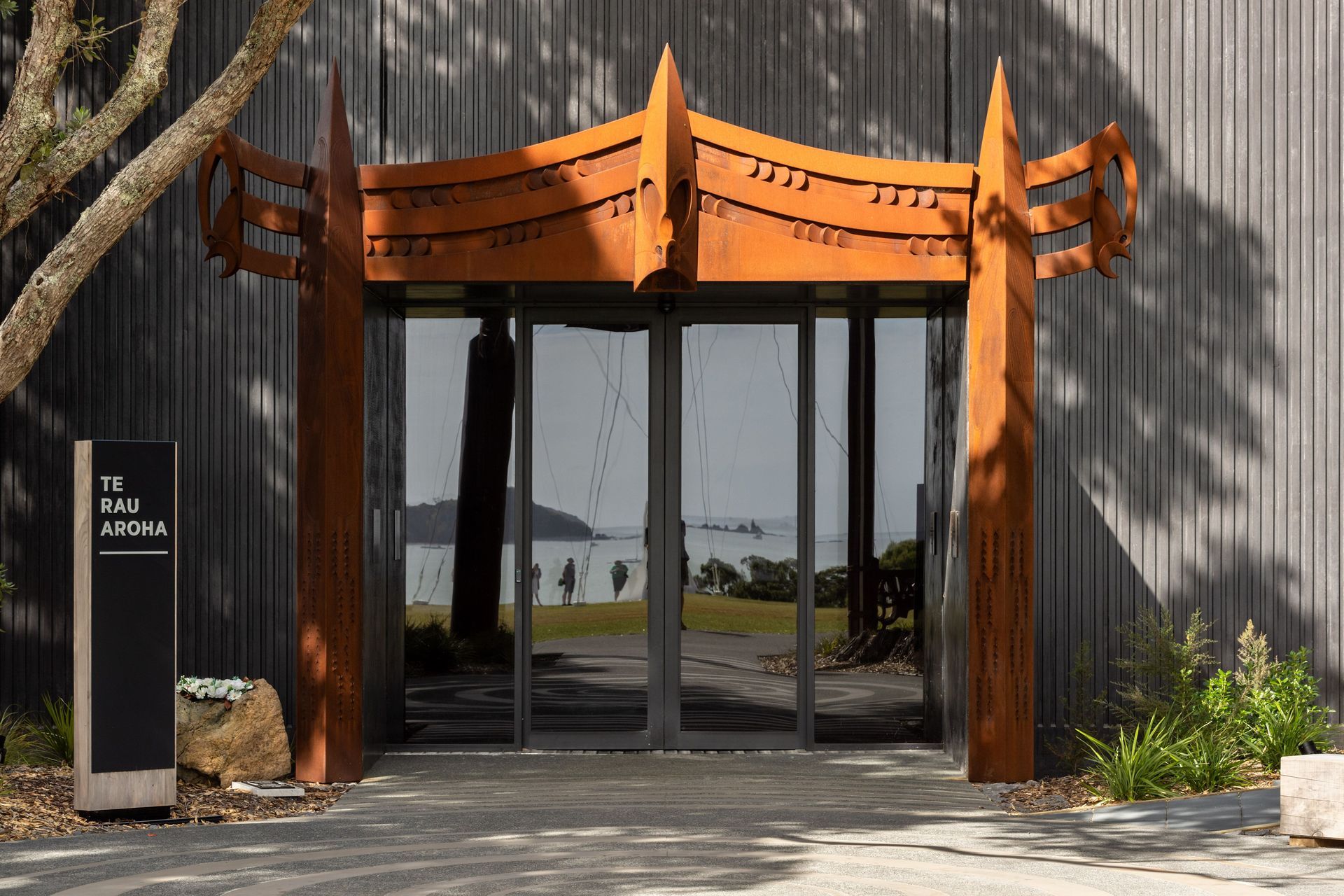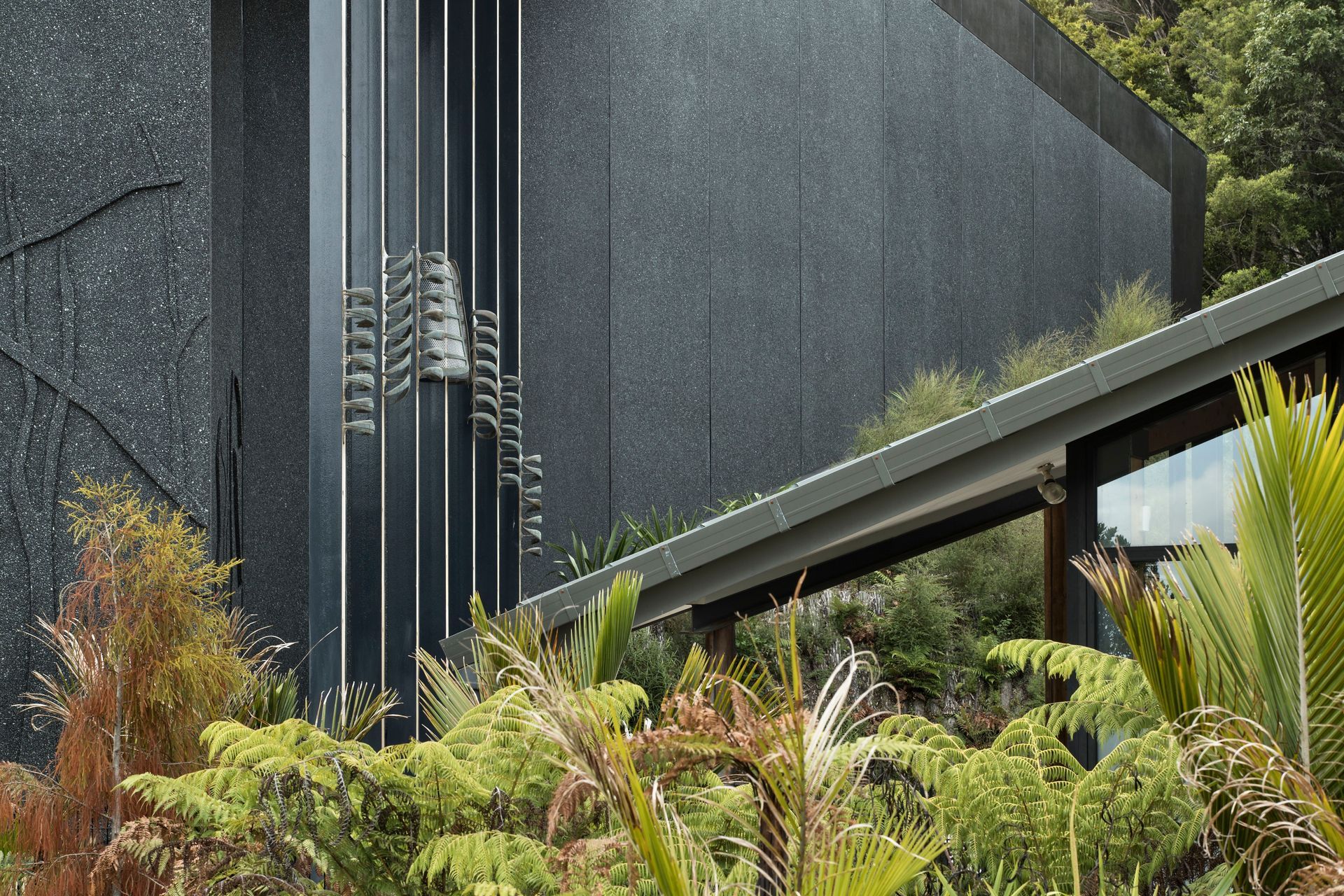Waitangi: Designed For Legacy

Every time I return to the Waitangi Treaty Grounds, I’m reminded that buildings have their own kind of life. The architecture here was designed to belong to the land, to the stories it holds, and to the people who come to experience it. Over time, the land has completed the work. Bush has grown up around the buildings, softening edges, enclosing courtyards, and weaving the architecture back into the landscape.
Our relationship with Waitangi stretches over fifteen years and several projects. Each has been an evolution of the same idea: that the role of architecture here is not to assert itself, but to serve the place. From the Waharoa gateway to Te Kōngahu Museum, Te Rau Aroha, and Tahuaroa Learning Centre, every stage has deepened that conversation.

Architecture That Tells A Story
At the Waharoa, the form was simple, a welcoming gesture marking the beginning of the visitor’s journey. Te Kōngahu, completed in 2016, extended that gesture into something more enduring. The museum was designed to hold taonga and tell stories with dignity and care. Cut into the topography and surrounded by native planting, its textured concrete walls capture the shadow of the surrounding trees. It sits quietly, allowing the land to speak first.
Te Rau Aroha, completed in 2020, carries a different weight. It honours the service and sacrifice of Māori in the armed forces, a building of memory and meaning. Its restrained concrete form feels protective, while the adjoining Tahuaroa Learning Centre offers contrast, lighter and timber-framed, open to the forest and the light beyond. Together, they express remembrance and renewal in one continuous gesture.

Reclaimed By The Land
When I walk the grounds today, what strikes me most is how much has changed, and how naturally. The Waharoa, once standing clear, is now enveloped by regenerating bush. The courtyard between it and Te Kōngahu has closed in with growth, creating a calm sense of enclosure. Even small crafted elements, like the gateway and fence by Pete Brammer, are now part of the ecosystem, steel weathering and timber settling into place.
The life of these buildings did not end at handover; it evolved. They have been reclaimed by the environment they were designed to respect. That, to me, is what it means for architecture to belong.
Across these projects, one idea has remained constant: design should respond, not dominate. To create something lasting here required listening to the land, to the stories, and to those entrusted with protecting them. The result is not a collection of standalone buildings, but a long and ongoing conversation between people and place.
In the end, that is the kind of legacy we aim for. Architecture that endures not through monumentality, but through belonging.

